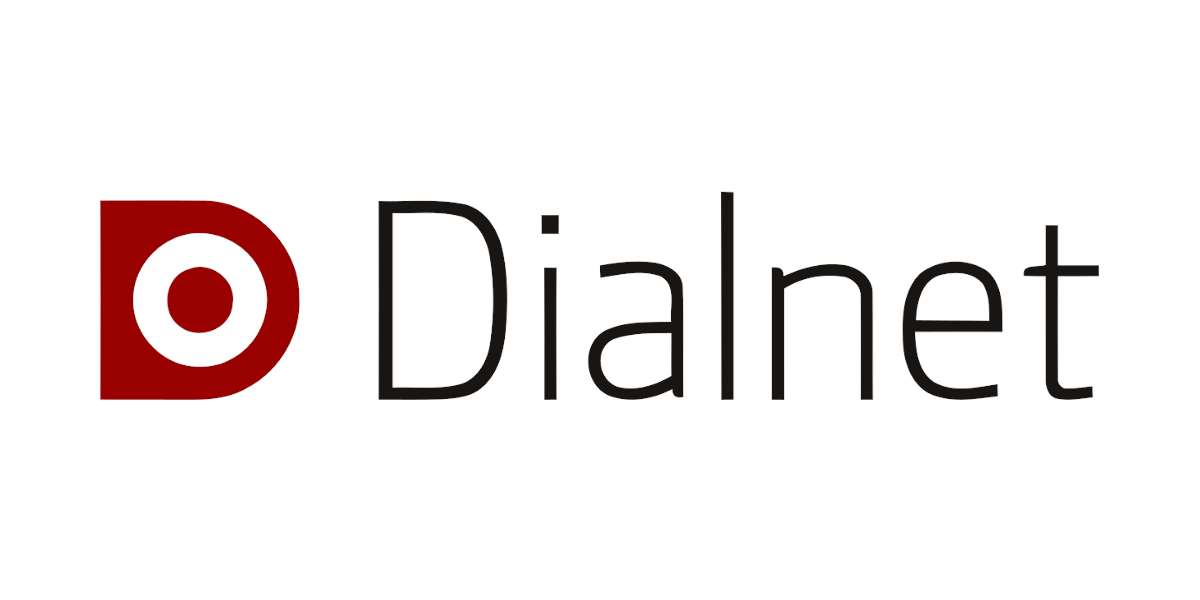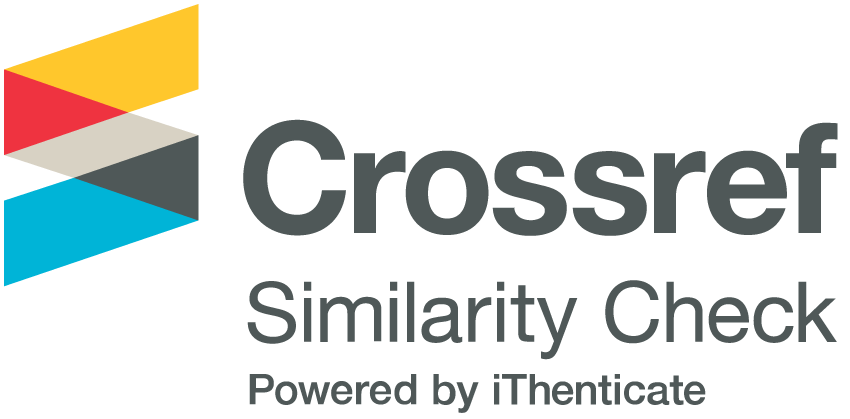The Use of YouTube by Political Parties in Andalusia
DOI:
https://doi.org/10.54790/rccs.13Keywords:
political propaganda, YouTube politics, social media and politics, content analysis, andalusian political partiesAbstract
Social media have become essential platforms for propaganda strategies. Among social networking sites, video-sharing site YouTube has managed to establish itself as the audio-visual platform par excellence, arousing the interest of political parties. This study analyses the YouTube communication of the main Andalusian political parties, due to the scarcity of scholarly literature on the use of this platform at the regional level and, more specifically, in the autonomous community of Andalucía. For this purpose, a content analysis of the videos published during 2020 on the official YouTube channels of Andalusian parties was performed. Results provide information about frequency of publication of the different parties, the main themes used, the type of interaction (positive or negative) or the propagandistic objectives and functions. Evidence indicates the predominance of radical-right party Vox regarding different variables; the relevance of topics related to the economy, politics, and government; the use of YouTube for communicating party positions; and propagandistic attacks against rival parties and/or governments.
Downloads
Metrics
References
Adelante Andalucía (5 de marzo de 2020). Inma Nieto: «Han ligado el futuro de Andalucía a Vox, y eso tiene consecuencias para las mujeres». YouTube. https://bit.ly/3vlLed8
Aladro Vico, E. y Requeijo Rey, P. (2020). Discurso, estrategias e interacciones de Vox en su cuenta oficial de Instagram en las elecciones del 28-A. Derecha radical y redes sociales. Revista Latina, 77, 203-229. https://doi.org/10.4185/RLCS-2020-1455 DOI: https://doi.org/10.4185/RLCS-2020-1455
Álvarez García, A. M. (2010). Principales efectos y ventajas del uso de las nuevas tecnologías en campañas electorales. CIC Cuadernos de Información y Comunicación, 15, 55-84.
Anticapitalistas Andalucía (1 de febrero de 2020). Lisardo Baena: «No nos dejemos hipnotizar con siglas, defendamos nuestras necesidades». YouTube. https://bit.ly/3spOSkz
Baines, P. y O’Shaughnessy, N. (2020). Towards the Measurement of Islamist Propaganda Effectiveness: A Marketing Perspective. En P. Baines, N. O’Shaughnessy y N. Snow (Eds.), The SAGE Handbook of Propaganda (pp. 223-242). London: SAGE. https://doi.org/10.4135/9781526477170.n15 DOI: https://doi.org/10.4135/9781526477170.n15
Barreto, K. y Rivera Prado, M. C. (2022). TikTok como estrategia comunicacional de Guillermo Lasso durante el balotaje electoral 2021 en Ecuador. Tsafiqui - Revista Científica en Ciencias Sociales, 12(17), https://doi.org/10.29019/tsafiqui.v12i17.959 DOI: https://doi.org/10.29019/tsafiqui.v12i17.959
Berrocal Gonzalo, S., Domínguez, E. C. y García, M. R. (2012). Comunicación Política en Internet: La tendencia al «infoentretenimiento» político en YouTube. Estudios sobre el mensaje periodístico, 18(2), 643-659. https://doi.org/10.5209/rev_ESMP.2012.v18.n2.41037 DOI: https://doi.org/10.5209/rev_ESMP.2012.v18.n2.41037
Berrocal, S., Gil Torres, A. y Campos-Domínguez, E. (2016). El uso de YouTube en las Elecciones al Parlamento Europeo 2014. El caso de España. Comunicación y Hombre, 12, 57-72. https://doi.org/10.32466/eufv-cyh.2016.12.189.57-72 DOI: https://doi.org/10.32466/eufv-cyh.2016.12.189.57-72
Berrocal-Gonzalo, S., Martín-Jiménez, V. y Gil-Torres, A. (2017). Líderes políticos en YouTube: Información y politainment en las elecciones generales de 2016 (26J) en España. El profesional de la información, 26(5), 937-946. https://doi.org/10.3145/epi.2017.sep.15 DOI: https://doi.org/10.3145/epi.2017.sep.15
Bossetta, M. (2018). The digital architectures of social media: Comparing political campaigning on Facebook, Twitter, Instagram, and Snapchat in the 2016 US election. Journalism & Mass Communication Quarterly, 95(2), 471-496. https://doi.org/10.1177/1077699018763307 DOI: https://doi.org/10.1177/1077699018763307
Capra, R. G., Lee, Ch. A., Marchionini, G., Russell, T., Shah, Ch. y Stutzman, F. (2008). Selection and Context Scoping for Digital Video Collections: An Investigation of Youtube and Blogs. En Proceedings of the 8th ACM/IEEE-CS joint conference on Digital libraries (pp. 211-220). ACM. https://doi.org/10.1145/1378889.1378925 DOI: https://doi.org/10.1145/1378889.1378925
Carrasco-Polanco, R., Sánchez-de-la-Nieta-Hernández, M. Á. y Trelles-Villanueva, A. (2020). Las elecciones al parlamento andaluz de 2018 en Instagram: partidos políticos, periodismo profesional y memes. Revista Mediterránea de Comunicación, 11(1), 75-85. https://doi.org/10.14198/MEDCOM2020.11.1.19 DOI: https://doi.org/10.14198/MEDCOM2020.11.1.19
Castro Martínez, A. y Díaz Morilla, P. (2021). La comunicación política de la derecha radical en redes sociales. De Instagram a TikTok y Gab, la estrategia digital de Vox. Dígitos. Revista de Comunicación Digital, 7, 67-89. https://doi.org/10.7203/rd.v1i7.210 DOI: https://doi.org/10.7203/rd.v1i7.210
Cerdán Martínez, V. (2021). La popularidad de los políticos españoles en YouTube antes y durante el COVID-19. Revista Inclusiones, 8, 62-73.
Cervi, L. y Marín-Lladó, C. (2021). What are political parties doing on TikTok? The Spanish case. Profesional de la información, 30(4), https://doi.org/10.3145/epi.2021.jul.03 DOI: https://doi.org/10.3145/epi.2021.jul.03
Cervi, L., Tejedor, S. y Marín Lladó, C. (2021). TikTok and the new language of political communication. Cultura, Lenguaje y Representación, 26, 267-287. https://doi.org/10.6035/clr.5817 DOI: https://doi.org/10.6035/clr.5817
Ciudadanos Andalucía (6 de mayo de 2020). Comparecencia de Juan Marín en el Parlamento de Andalucía. YouTube. https://bit.ly/3M5Hcvo
Civieta, Ó. F. (11 de octubre de 2015). ¿Existe realmente una ‘nueva política’? eldiario.es. https://bit.ly/3vuXZlE
Church, S. H. (2010). YouTube Politics: YouChoose and Leadership Rhetoric During the 2008 Election. Journal of Information Technology & Politics, 7, 124-142. https://doi.org/10.1080/19331681003748933 DOI: https://doi.org/10.1080/19331681003748933
Davis, R., Baumgartner, J. C., Francia, P. L. y Morris, J. S. (2009). The internet in U.S. election campaigns. En A. Chadwick y Ph. N. Howard (Eds.), Routledge Handbook of Internet Politics (pp. 13-24). Abingdon: Routledge.
Deltell, L., Claes, F. y Osteso, J. M. (2013). Predicción de tendencia política por Twitter: Elecciones Andaluzas 2012. Ámbitos. Revista internacional de comunicación, 22. https://revistascientificas.us.es/index.php/Ambitos/article/view/10892
Díaz, J. B. y Del Olmo, F. J. R. (2016). La imagen en Twitter como nuevo eje de la comunicación política. Opción, 32(7), 271-290. https://www.redalyc.org/articulo.oa?id=31048480018
Domínguez Benavente, P. (2017). Explorando la identidad de las nuevas élites políticas españolas: Ciudadanos y Podemos. Política y Gobernanza. Revista de Investigaciones y Análisis Político, 1, 53-78. https://doi.org/10.30827/polygob.v0i1.6318
Ferreira, C. (2019). Vox como representante de la derecha radical en España: un estudio sobre su ideología. Revista Española de Ciencia Política, 51, 73-98. https://doi.org/10.21308/recp.51.03 DOI: https://doi.org/10.21308/recp.51.03
Foong Lian, H. (2018). «Us» Versus «Them»: an ideological battle for electorates on political YouTube videos in the 2016 Sarawak State election. Contemporary Southeast Asia, 40(1), 27-49. https://doi.org/10.1355/cs40-1b DOI: https://doi.org/10.1355/cs40-1b
Gandlaz, M., Larrondo Ureta, A. y Orbegozo Terradillos, J. (2020). Viralidad y engagement en los spots electorales a través de YouTube: el caso de las elecciones autonómicas vascas de 2016. Mediatika. Cuadernos de Medios de Comunicación, 18, 177-206.
Gil Ramírez, M. (2019). El uso de YouTube en el Procés Catalán. Comunicación Política a través de los Social Media: ¿Prosumidores Mediatizados? Estudios sobre el Mensaje Periodístico, 25(1), 213-234. https://doi.org/10.5209/ESMP.63725 DOI: https://doi.org/10.5209/ESMP.63725
Gil Ramírez, M., Castillero Ostio, E. y Gómez de Travesedo Rojas, R. (2020). Imagen y título de portada como elementos estratégicos de comunicación política en YouTube: uso por parte de la esfera política española. AdComunica, 20, 255-282. https://doi.org/10.6035/2174-0992.2020.20.11 DOI: https://doi.org/10.6035/2174-0992.2020.20.11
Gil-Ramírez, M. y Gómez de Travesedo-Rojas, R. (2020). Gestión de la política española en YouTube. Una asignatura pendiente. Observatorio, 14(1), 22-44.
Gil-Ramírez, M., Gómez de Travesedo-Rojas, R. y Almansa-Martínez, A. (2019). Politainment y personalización política. ¿De la televisión a YouTube? Revista Latina de Comunicación Social, 74, 1542-1564. https://doi.org/10.4185/RLCS-2019-1398en DOI: https://doi.org/10.4185/RLCS-2019-1398en
Gómez de Travesedo, R. y López, P. (2016). La utilización de YouTube por parte de los principales partidos políticos durante la precampaña de 2015 en España. En C. Mateos Martín y F. J. Herrero Gutiérrez (Coords.), La pantalla insomne (pp. 3120-3136). Sociedad Latina de Comunicación Social.
Graham, T., Broersma, M., Hazelhoff, K. y Van’t Haar, Gu. (2013). Between broadcasting political messages and interacting with voters. The use of Twitter during the 2010 UK general election campaign. Information, Communication & Society, 16(5), 692-716. https://doi.org/10.1080/1369118X.2013.785581 DOI: https://doi.org/10.1080/1369118X.2013.785581
Gueorguieva, V. (2008). Voters, MySpace, and YouTube. The Impact of Alternative Communication Channels on the 2006 Election Cycle and Beyond. Social Science Computer Review, 26(3), 288-300. https://doi.org/10.1177/0894439307305636 DOI: https://doi.org/10.1177/0894439307305636
Klotz, R. J. (2010). The Sidetracked 2008 YouTube Senate Campaign. Journal of Information Technology & Politics, 7, 110-123. https://doi.org/10.1080/19331681003748917 DOI: https://doi.org/10.1080/19331681003748917
Krippendorff, K. (2004). Content Analysis: An Introduction to Its Methodology. Thousand Oaks: Sage.
Litvinenko, A. (2021). YouTube as Alternative Television in Russia: Political Videos During the Presidential Election Campaign 2018. Social Media + Society, 7(1), 1-9. https://doi.org/10.1177/2056305120984455 DOI: https://doi.org/10.1177/2056305120984455
López García, G., Cano Orón, L. y Argilés Martínez, L. (2016). Circulación de los mensajes y establecimiento de la agenda en Twitter: el caso de las elecciones autonómicas de 2015 en la Comunidad Valenciana. Trípodos, 39, 163-183.
López-Meri, A., Marcos-García, S. y Casero-Ripollés, A. (2017). ¿Qué hacen los políticos en Twitter? Funciones y estrategias comunicativas en la campaña electoral española de 2016. El profesional de la información, 26(5), 795-804. https://doi.org/10.3145/epi.2017.sep.02 DOI: https://doi.org/10.3145/epi.2017.sep.02
Medina-Serrano, J.-C., Papakyriakopoulos, O. y Hegelich, S. (2020, julio). Dancing to the partisan beat: A first analysis of political communication on TikTok. En WebSci ’20, July 6-10, 2020, Southampton, United Kingdom (pp. 257-266). ACM.
Marthe Möller, A., Kühne, R., Baumgartner, S. E. y Jochen, P. (2019). Exploring user responses to entertaiment and political videos: an automated content analysis of YouTube. Social Science Computer Review, 37(4), 510-528. https://doi.org/10.1177/0894439318779336 DOI: https://doi.org/10.1177/0894439318779336
Olof Larsson, A. (2018). Thumbs up, thumbs down? Likes and dislikes as popularity drivers of political YouTube videos. First Monday, 23(8), s.p. https://doi.org/10.5210/fm.v23i8.8318 DOI: https://doi.org/10.5210/fm.v23i8.8318
Pérez-Curiel, C. y García Gordillo, M. (2019). Formato televisivo y proyección en Twitter de las elecciones en Andalucía. En E. Conde-Vázquez, J. Fontenla-Pedreira y J. Rúas-Araújo (Eds.), Debates electorales televisados: del antes al después (pp. 257-282). Cuadernos Artesanos de Comunicación, cac154. Latina.
Pineda, A., Garrido, M. y Ramos, M. (2013). Análisis comparativo de la publicidad política en las elecciones de 2008 de Estados Unidos y España. Zer. Revista de estudios de comunicación, 18 (34), 73-91.
Podemos Andalucía (14 de enero de 2020). Pilar González interviene en Horizonte 2023. YouTube. https://bit.ly/3sqJWvE
PP Andaluz (31 de mayo de 2020). 200531 Toni Martín online. YouTube. https://bit.ly/3BW8QX0
PSOE de Andalucía (s.f.). DIRECTO Rueda de prensa de Rodrigo Sánchez Haro. YouTube. https://bit.ly/3thUA7n
Ricke, L. (2014). YouTube. En K. Harvey, Encyclopedia of Social Media and Politics (pp. 1411-1413). Thousand Oaks: SAGE.
Ridout, T. N., Fowler, E. F. y Branstetter, J. (2-5 de septiembre de 2010). Political Advertising in the 21st Century: The Rise of the YouTube Ad [Comunicación en congreso]. American Political Science Association 2010 Annual Meeting Paper. https://bit.ly/3vkngiA
Rodríguez-Serrano, A., García-Catalán, Sh. y Martín-Núñez, M. (2019). Estrategias narrativas audiovisuales de desinformación en YouTube de la nueva extrema derecha europea. El profesional de la información, 28(3), e280311, 1-10. https://doi.org/10.3145/epi.2019.may.11 DOI: https://doi.org/10.3145/epi.2019.may.11
Rodríguez Serrano, A., García Catalán, Sh. y Martín Núñez, M. (2021). La difusión audiovisual de la extrema derecha europea contemporánea: herencias e intertextos fílmicos para desplegar el odio. Communication & Society, 34(2), 231-246.
Romero, F. E. (2019). Esfera pública mediatizada, subjetividad política y neoliberalismo: la campaña electoral de Mauricio Macri en 2015. Argumentos: revista de crítica social, 21, 347-383.
Ruiz del Olmo, F. J. y Bustos Díaz, J. (2016). Del tweet a la fotografía, la evolución de la comunicación política en Twitter hacia la imagen. El caso del debate de estado de la nación en España (2015). Revista Latina de Comunicación Social, 71, 108-123. https://doi.org/10.4185/RLCS-2016-1086 DOI: https://doi.org/10.4185/RLCS-2016-1086
RTVE.es. (20 de mayo de 2021). VOX retira el apoyo al Gobierno de Andalucía por acoger a menores migrantes y pide el adelanto electoral. RTVE.es. https://bit.ly/3szgNi9
Sohal, S. y Kaur, H. (2018). A Content Analysis of YouTube Political Advertisements: Evidence from Indian Parliamentary Elections. Journal of Creative Communications, 13(2), 133-156. https://doi.org/10.1177/0973258618761408 DOI: https://doi.org/10.1177/0973258618761408
The YouTube Team (21 de marzo de 2013). YouTube hits a billion monthly users. YouTube Official Blog. https://bit.ly/3vnqD8z
Vázquez Sande, P. (2016a). Ejes temáticos al servicio del storytelling personal del candidato político. Dígitos. Revista de Comunicación Digital, 3(2), 37-55.
Vázquez Sande, P. (2016b). Storytelling personal en política a través de Youtube. Comunicación y Hombre, 12, 41-55. DOI: https://doi.org/10.32466/eufv-cyh.2016.12.188.41-55
Vázquez Sande, P. (2017). Personalización de la política. Storytelling y valores transmitidos. Comunication & Society, 30(3), 275-291. https://doi.org/10.15581/003.30.3.275-291 DOI: https://doi.org/10.15581/003.30.3.275-291
Vesnic-Alujevic, L. y Van Bauwel, S. (2014). YouTube: A Political Advertising Tool? A Case Study of the Use of YouTube in the Campaign for the European Parliament Elections. Journal of Political Marketing, 13(3), 195-212. https://doi.org/10.1080/15377857.2014.929886 DOI: https://doi.org/10.1080/15377857.2014.929886
Vijay, D. y Gekker, A. (2021). Playing politics: How Sabarimala played out on TikTok. American Behavioral Scientist, 65(5), 712-734. https://doi.org/10.1177/0002764221989769 DOI: https://doi.org/10.1177/0002764221989769
Villar-Hernández, P. y Pellisser Rossell, Nel•lo (2021). Transformaciones y rasgos discursivos del spot electoral en los comicios generales del 26J en España. Cuadernos.info, 50, 275-298. https://doi.org/10.7764/cdi.50.27313 DOI: https://doi.org/10.7764/cdi.50.27313
Vox Parlamento de Andalucía (15 de mayo de 2020). EUGENIO MOLTÓ alerta del déficit de médicos en Andalucía [archivo de vídeo]. YouTube. https://bit.ly/3JXQlEy
Downloads
Published
How to Cite
Issue
Section
License
Copyright (c) 2022 Antonio Pineda Cachero, Sara Rebollo-Bueno, Julieti Sussi Oliveira

This work is licensed under a Creative Commons Attribution-NonCommercial-ShareAlike 4.0 International License.
Funding data
-
Fundación Pública Andaluza Centro de Estudios Andaluces×
Grant numbers PRY095/19










